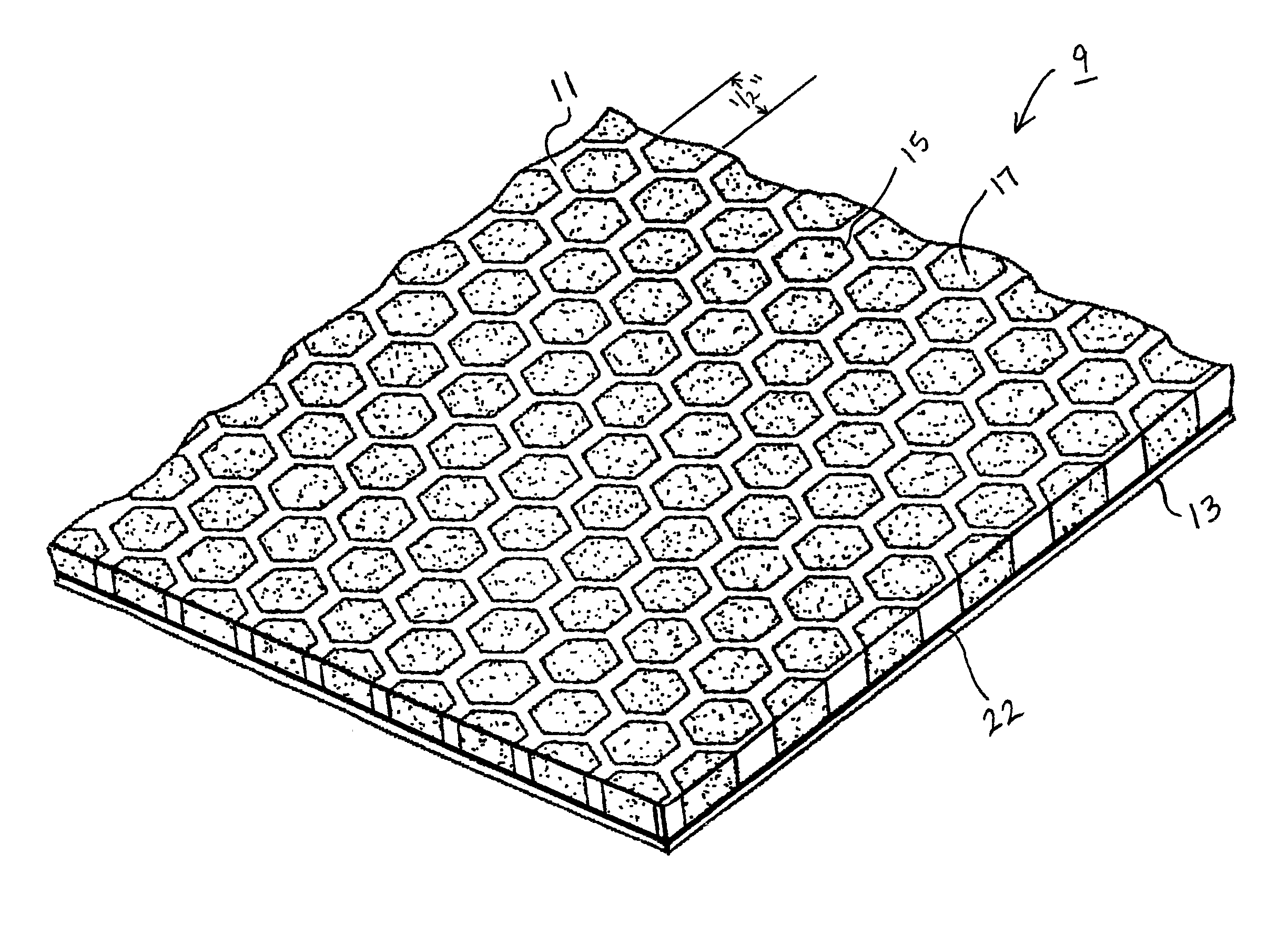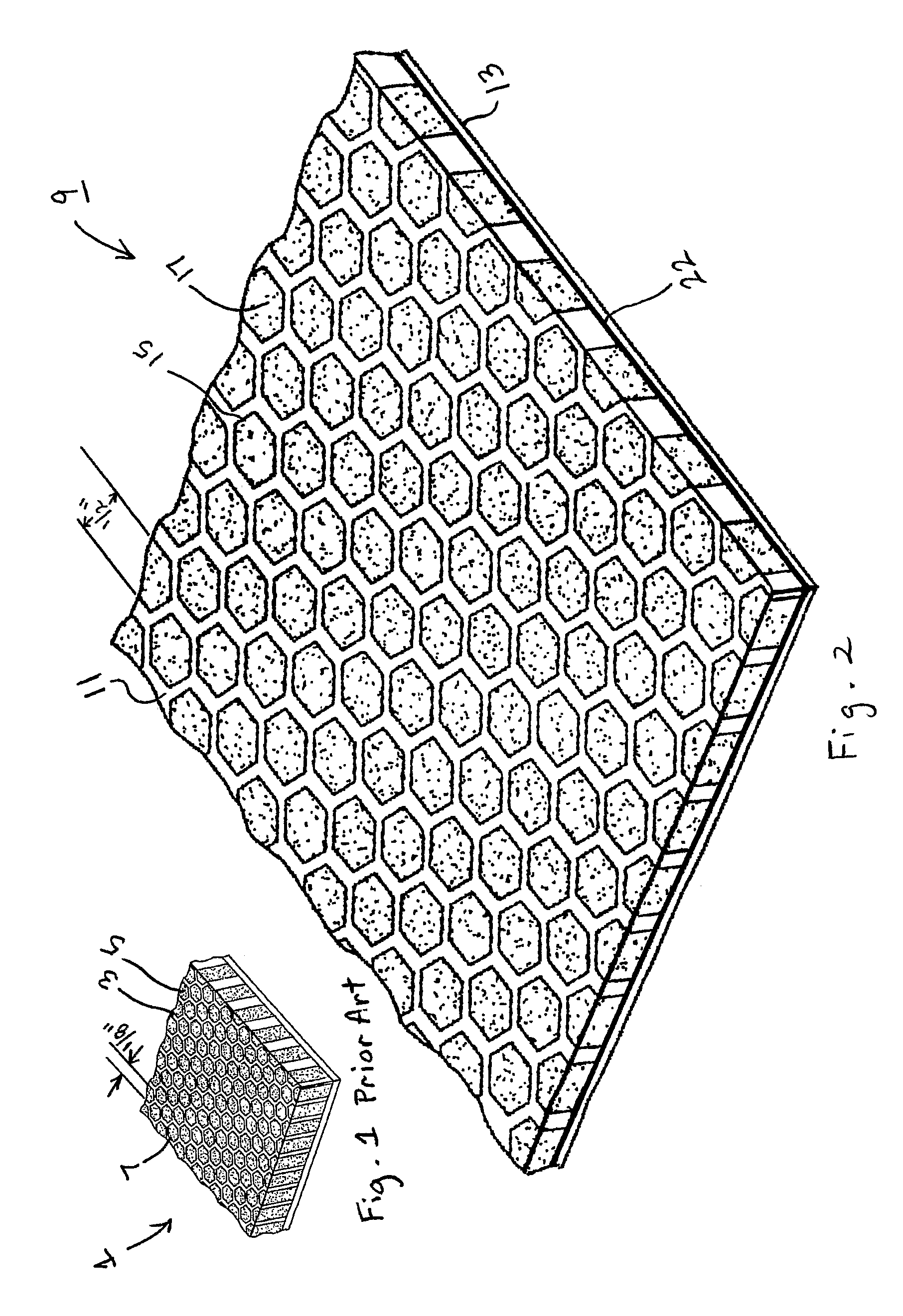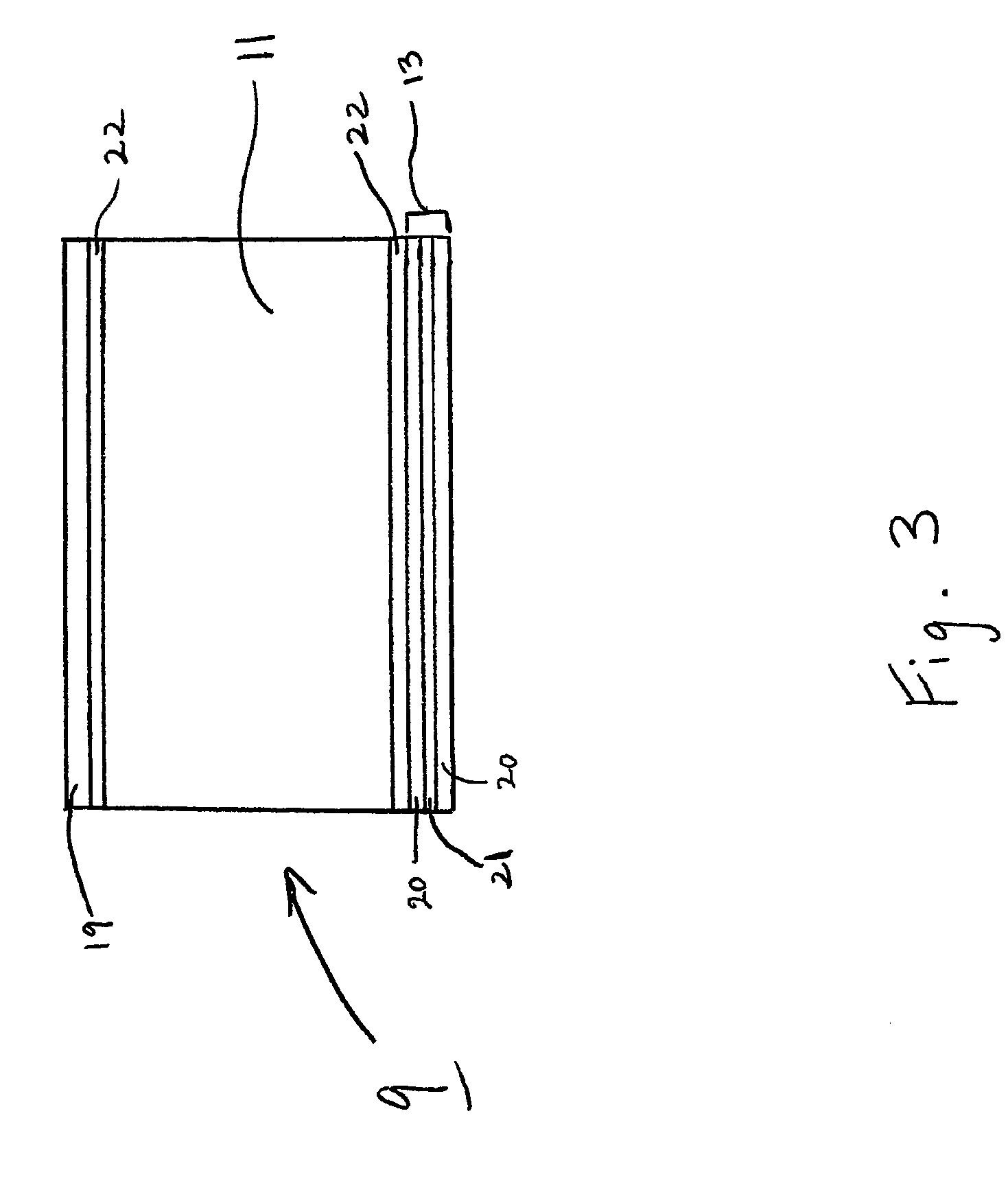Method and apparatus for reducing the infrared and radar signature of a vehicle
a technology of infrared and radar signature, which is applied in the direction of aircraft floors, aircraft stabilisation, silicon compounds, etc., can solve the problems of reducing the performance and the range of aircraft, affecting the aerodynamics of aircraft, and high likelihood of being targeted, so as to reduce the radar signature of aircraft, reduce the structural integrity of honeycomb structure, and reduce the radar/microwave and thermal/infrared signature of aircra
- Summary
- Abstract
- Description
- Claims
- Application Information
AI Technical Summary
Benefits of technology
Problems solved by technology
Method used
Image
Examples
Embodiment Construction
[0021]While the making and using of various embodiments of the present invention are discussed in detail below, it should be appreciated that the present invention provides many applicable inventive concepts, which can be embodied in a wide variety of specific contexts. The specific embodiments discussed herein are merely illustrative of specific ways to make and use the invention and do not delimit the scope of the invention.
[0022]Referring now to FIGS. 2 and 3 in the drawings, a partial perspective view and a schematic representation of the preferred embodiment of a radar-absorbing panel 9 according to the present invention are illustrated, respectively. As illustrated in FIG. 2, panel 9 comprises a honeycomb core 11 and a lower skin 13 attached to the bottom of core 11. As seen in FIG. 2, core 11 comprises an array of individual cells 15 which are preferably filled with an aerogel 17. Lower skin 13 is typically constructed of a combination of discrete layers of woven fiberglass h...
PUM
 Login to View More
Login to View More Abstract
Description
Claims
Application Information
 Login to View More
Login to View More - R&D
- Intellectual Property
- Life Sciences
- Materials
- Tech Scout
- Unparalleled Data Quality
- Higher Quality Content
- 60% Fewer Hallucinations
Browse by: Latest US Patents, China's latest patents, Technical Efficacy Thesaurus, Application Domain, Technology Topic, Popular Technical Reports.
© 2025 PatSnap. All rights reserved.Legal|Privacy policy|Modern Slavery Act Transparency Statement|Sitemap|About US| Contact US: help@patsnap.com



